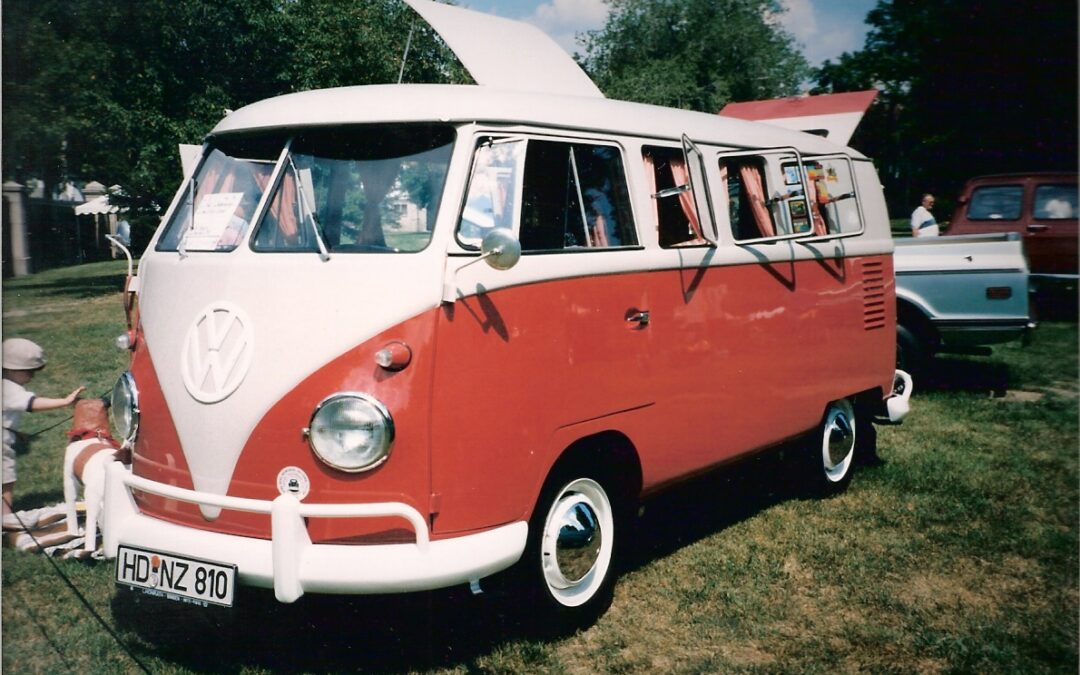The minivan packs the greatest passenger/cargo space into the shortest possible vehicle. Although a few others such as some British manufacturers built minivans, it was Volkswagen that popularized it in the early 1950s. And while Chrysler brought it into the North American mainstream in the 1980s, a couple of Americans had tried the idea back in the 1930s.
Buckminster Fuller, brilliant designer of the geodesic dome (dubbed the Bucky Ball), created a motor vehicle he called the Dymaxion introduced in 1933. Shaped like a fat cigar on wheels, the Dymaxion looked something like a short airplane without wings. It had two regular sized wheels just ahead of the lateral centreline and driver and front passengers rode ahead of the front axle.
One small rear wheel gave the Dymaxion a nose-up attitude and steered it rudder fashion. It was a breeze to park and would turn completely around in its own length!
A rear-mounted Ford V-8 engine powered the front wheels. With a 5,791 mm (228 in.) length and 3,175 mm (125 in.) wheelbase the Dymaxion was said to accommodate 11 people. In spite of intense public interest in the Dymaxion a fatal accident destroyed interest and only three were built.
William Stout, designer of the famous Ford Tri-Motor airplane among other things, introduced his van-like Scarab in 1932. Its steel space frame, aluminum body and other aircraft influences were evident. It lacked fenders or hood and a rear-mounted, rear drive Ford V-8 gave a low, flat floor.
Wheels at the corners and a long wheelbase provided almost room-like space. The rear seat was 1,829 mm (6 feet) wide, the driver’s seat was anchored, but the others could be moved around. A small table could be set up. Its fate was a little better than the Dymaxions, although Stout Motor Car Co. sold only nine Scarabs.
After the Second World War the first real minivan appeared from Germany’s DKW, followed a few months later by the Volkswagen Transporter van. Once VW Beetle production was under way in the late 1940s, VW’s management saw the need for a light commercial vehicle and put the Transporter into production. It was little more than a metal box on a sturdy ladder frame, and a versatile pickup version was also offered.
The Transporter was introduced late in 1949 with the flat, air-cooled, four cylinder Beetle engine located in the rear. It drove the rear wheels through a four-speed manual transmission and the reduction gears used in the military Jeep-type Kubelwagen. This gave additional ground clearance and the pulling power necessary for commercial applications.
The front seat was directly over the wheels and the cargo area was accessed via two swinging side doors supplemented by a rear hatch. It was a little longer than the Beetle and carried up to seven passengers or 680 kg (3/4 ton) of cargo. Although there were competitors like the DKW Karavan and Fiat Multipla, the VW prevailed.
The roomy, easy to maintain, economical VW van became a favourite hippy vehicle in the 1960s and 1970s. Decorated in psychedelic colours and flowers this unpretentious rolling home gave the beat generation the ultimate anti-establishment statement.
In 1961 Detroit responded with Ford’s Econoline and Chevrolet’s Corvair Greenbrier. Both followed VW’s box-on-wheels theme, but with different approaches. Ford’s conventional front-engine, rear-drive configuration used Ford Falcon components.
The Greenbrier, based on the Corvair car, had a VW-inspired flat, six cylinder, air cooled, rear engine. It resembled a stylish version of the VW van. Chrysler entered the field in 1964 with its flat-nosed Dodge A100.
Larger engines gave the American vans much higher performance than the VW. But while the minivan market grew, station wagons were still the vehicle of choice for many families.
VW’s competition lasted only a few years. The Ford and Dodge grew larger and more powerful and the Chevrolet Greenbrier disappeared in 1964 when sales no longer warranted continuing.
As other vans became heavier and thirstier through the 1970s and into the 1980s, Volkswagen had the minivan field pretty much to itself again. The VW was revised and enlarged in 1967, and again in 1979, becoming the Vanagon.
The minivan world changed dramatically in 1984 with the introduction of Chrysler’s compact Dodge Caravan and Plymouth Voyager vans. Using K-car (Dodge Aries/Plymouth Reliant) front-wheel drive engine and driveline Chrysler created a “garagable,” vehicle that carried seven passengers.
Chrysler’s minivan quickly replaced the conventional station wagon as the family hauler. It dominated the minivan market, although worthy challengers like the Ford Windstar finally emerged.
When DKW and Volkswagen introduced their vans 70 years ago they could never have envisaged their popularity. And while they began waning in the 1990s with the rise of sport utility vehicles and so-called “crossovers,” in reality tall vans, they still remain an eminently practical vehicle.

